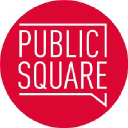InstanceAssemble: Layout-Aware Image Generation via Instance Assembling Attention
Diffusion models have demonstrated remarkable capabilities in generating high-quality images. Recent advancements in Layout-to-Image (L2I) generation have leveraged positional conditions and textual descriptions to facilitate precise and controllable image synthesis. Despite overall progress, current L2I methods still exhibit suboptimal performance. Therefore, we propose InstanceAssemble, a novel architecture that incorporates layout conditions via instance-assembling attention, enabling position control with bounding boxes (bbox) and multimodal content control including texts and additional visual content. Our method achieves flexible adaption to existing DiT-based T2I models through light-weighted LoRA modules. Additionally, we propose a Layout-to-Image benchmark, Denselayout, a comprehensive benchmark for layout-to-image generation, containing 5k images with 90k instances in total. We further introduce Layout Grounding Score (LGS), an interpretable evaluation metric to more precisely assess the accuracy of L2I generation. Experiments demonstrate that our InstanceAssemble method achieves state-of-the-art performance under complex layout conditions, while exhibiting strong compatibility with diverse style LoRA modules.




